Organisational Behaviour Report: Marks and Spencer, OB Analysis
VerifiedAdded on 2023/01/03
|17
|2705
|78
Report
AI Summary
This report provides an in-depth analysis of organisational behaviour, focusing on key elements such as culture, communication, and motivation within the context of Marks and Spencer (M&S). The introduction establishes the scope of organisational behaviour, emphasizing its impact on job structures, performance, and leadership. The report delves into the concept of culture, exploring different models like Handy’s model, and its influence on communication and motivation. It examines how organisational culture shapes communication processes and the impact of cultural differences on team dynamics. Additionally, the report explores various theories of motivation, including Maslow's hierarchy of needs, and how they can be applied to enhance employee engagement and organisational success. The report concludes by highlighting the crucial role of culture in driving overall organisational success, emphasizing the importance of aligning core values, managing workflows, and fostering positive team interactions to achieve optimal performance and productivity. The report uses Weber’s theory of communication to enhance effective communication within M&S.
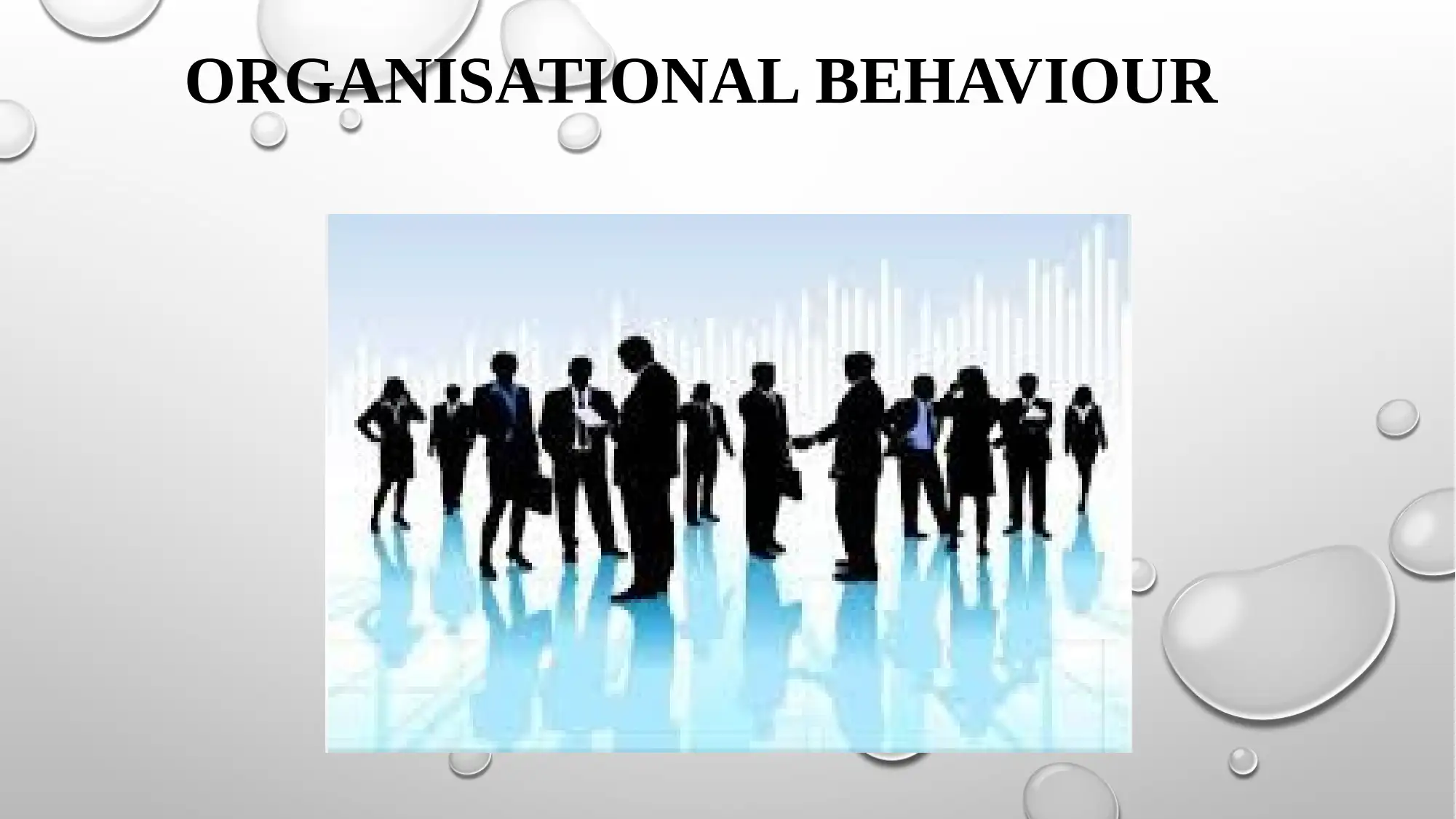
ORGANISATIONAL BEHAVIOUR
Paraphrase This Document
Need a fresh take? Get an instant paraphrase of this document with our AI Paraphraser
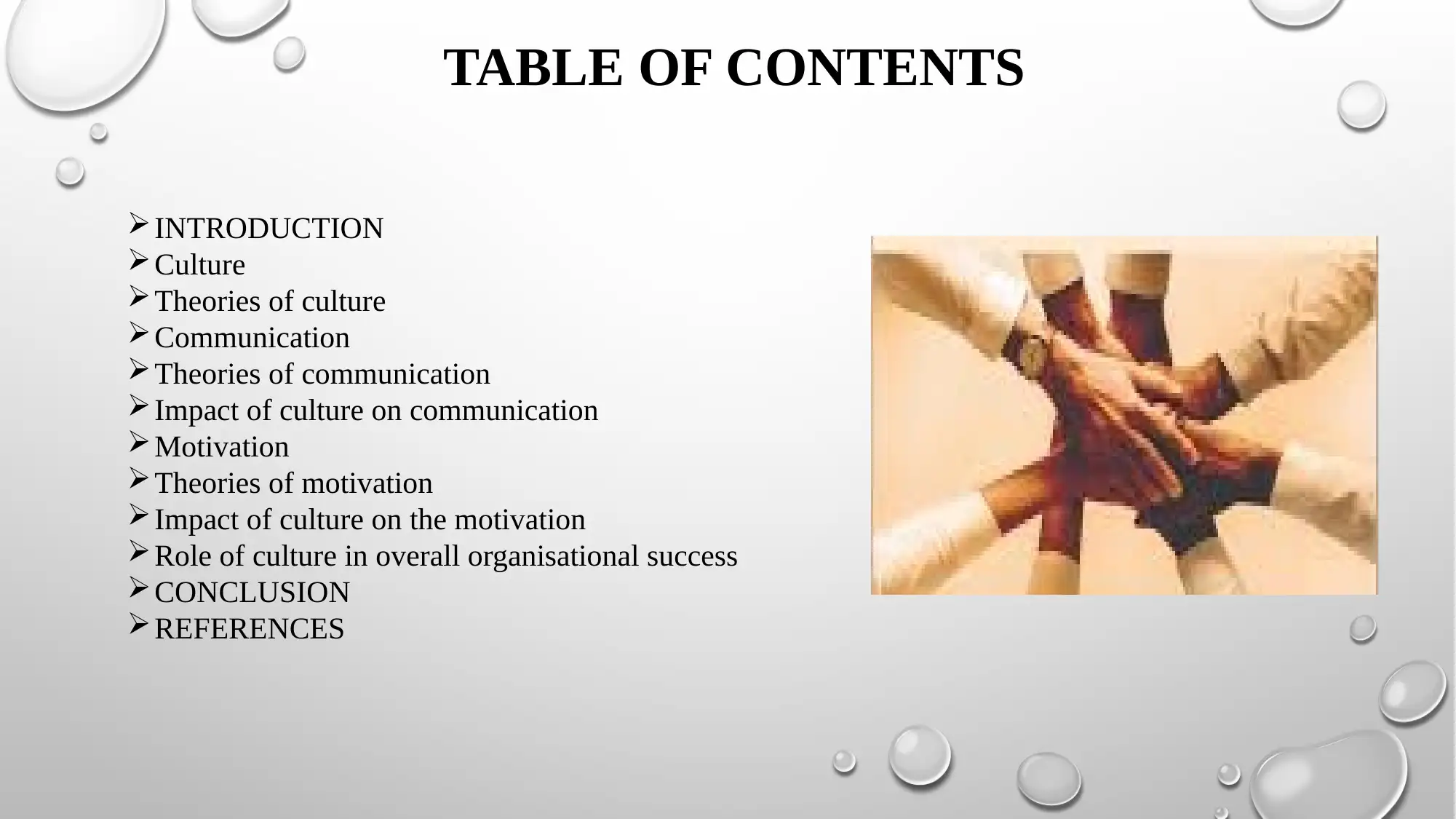
TABLE OF CONTENTS
INTRODUCTION
Culture
Theories of culture
Communication
Theories of communication
Impact of culture on communication
Motivation
Theories of motivation
Impact of culture on the motivation
Role of culture in overall organisational success
CONCLUSION
REFERENCES
INTRODUCTION
Culture
Theories of culture
Communication
Theories of communication
Impact of culture on communication
Motivation
Theories of motivation
Impact of culture on the motivation
Role of culture in overall organisational success
CONCLUSION
REFERENCES
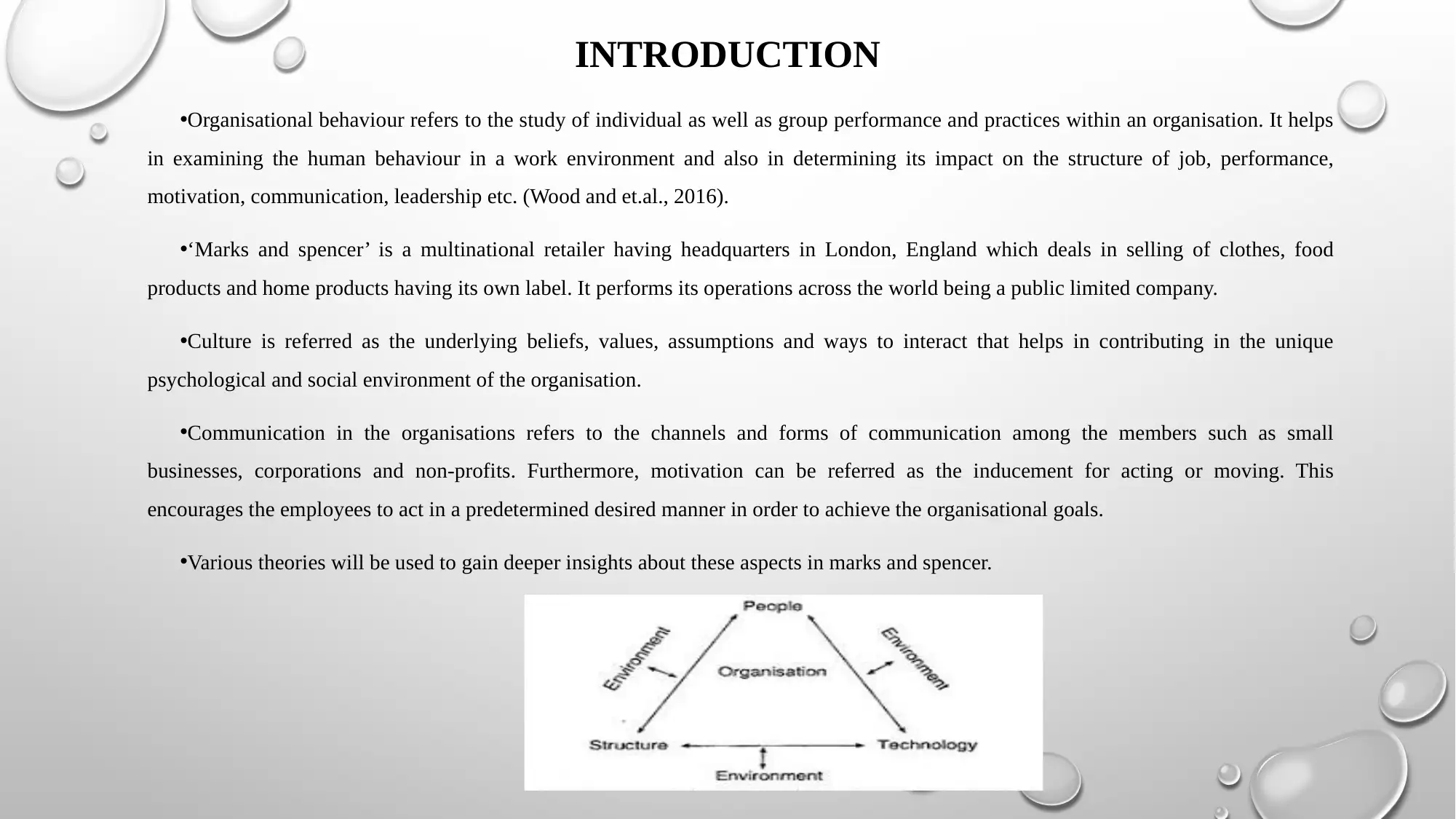
INTRODUCTION
•Organisational behaviour refers to the study of individual as well as group performance and practices within an organisation. It helps
in examining the human behaviour in a work environment and also in determining its impact on the structure of job, performance,
motivation, communication, leadership etc. (Wood and et.al., 2016).
•‘Marks and spencer’ is a multinational retailer having headquarters in London, England which deals in selling of clothes, food
products and home products having its own label. It performs its operations across the world being a public limited company.
•Culture is referred as the underlying beliefs, values, assumptions and ways to interact that helps in contributing in the unique
psychological and social environment of the organisation.
•Communication in the organisations refers to the channels and forms of communication among the members such as small
businesses, corporations and non-profits. Furthermore, motivation can be referred as the inducement for acting or moving. This
encourages the employees to act in a predetermined desired manner in order to achieve the organisational goals.
•Various theories will be used to gain deeper insights about these aspects in marks and spencer.
•Organisational behaviour refers to the study of individual as well as group performance and practices within an organisation. It helps
in examining the human behaviour in a work environment and also in determining its impact on the structure of job, performance,
motivation, communication, leadership etc. (Wood and et.al., 2016).
•‘Marks and spencer’ is a multinational retailer having headquarters in London, England which deals in selling of clothes, food
products and home products having its own label. It performs its operations across the world being a public limited company.
•Culture is referred as the underlying beliefs, values, assumptions and ways to interact that helps in contributing in the unique
psychological and social environment of the organisation.
•Communication in the organisations refers to the channels and forms of communication among the members such as small
businesses, corporations and non-profits. Furthermore, motivation can be referred as the inducement for acting or moving. This
encourages the employees to act in a predetermined desired manner in order to achieve the organisational goals.
•Various theories will be used to gain deeper insights about these aspects in marks and spencer.
⊘ This is a preview!⊘
Do you want full access?
Subscribe today to unlock all pages.

Trusted by 1+ million students worldwide

CULTURE
• This is a fascinating topic in the organisations as it can provide the organisations with valuable and unique
insights so that they will take the next steps in achieving the goals. It describes the beliefs and values of the
organisation.
• The policies, ideologies and the principles of an organisation forms its culture. The culture is the main
reason which decides the ways in which the individuals interact with each other and behave with the
colleagues and the people outside the company.
• Every employee must have respect towards the culture of the organisation so that they can deliver their best
level and can enjoy their work.
• This is a fascinating topic in the organisations as it can provide the organisations with valuable and unique
insights so that they will take the next steps in achieving the goals. It describes the beliefs and values of the
organisation.
• The policies, ideologies and the principles of an organisation forms its culture. The culture is the main
reason which decides the ways in which the individuals interact with each other and behave with the
colleagues and the people outside the company.
• Every employee must have respect towards the culture of the organisation so that they can deliver their best
level and can enjoy their work.
Paraphrase This Document
Need a fresh take? Get an instant paraphrase of this document with our AI Paraphraser
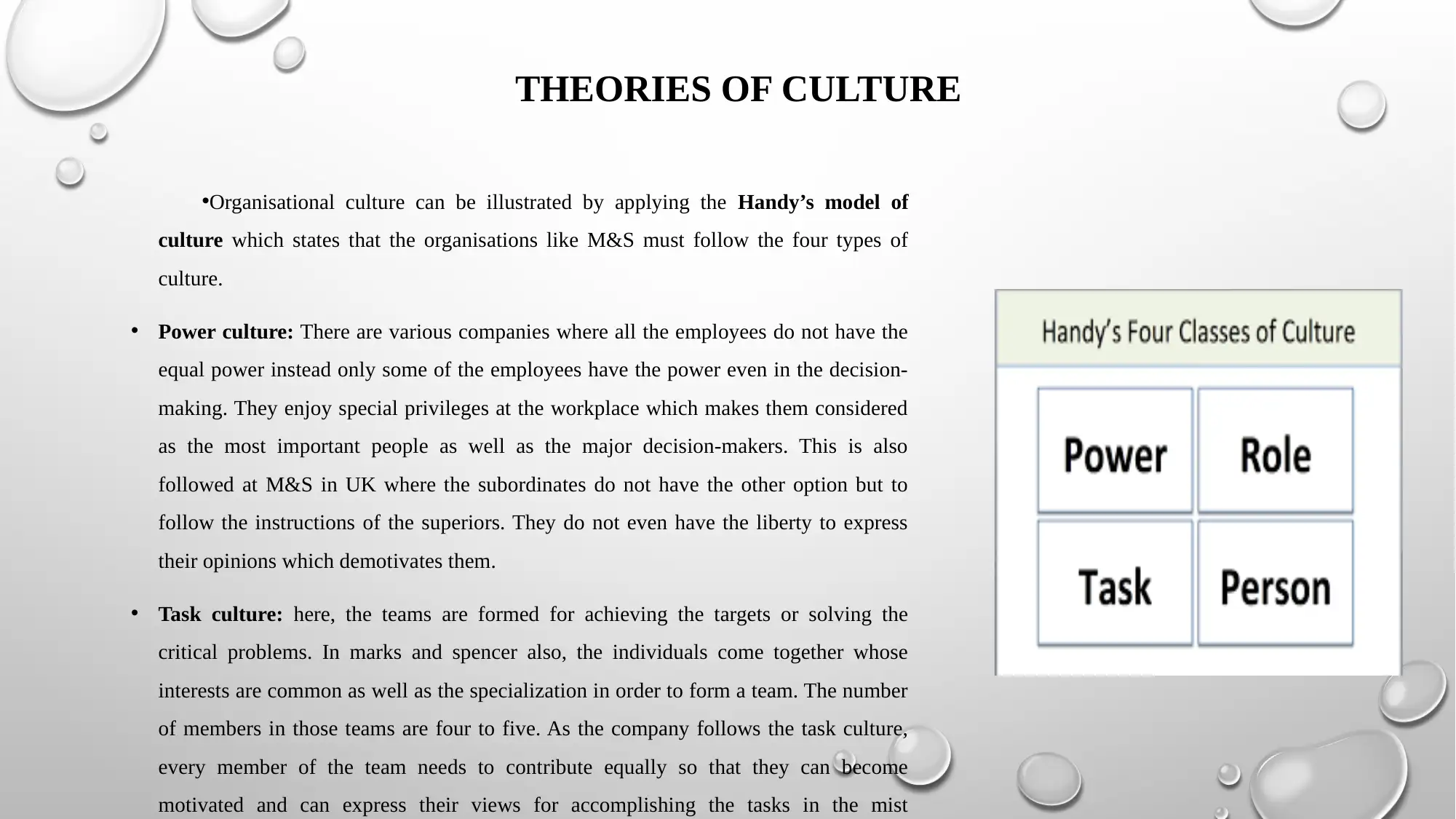
THEORIES OF CULTURE
•Organisational culture can be illustrated by applying the Handy’s model of
culture which states that the organisations like M&S must follow the four types of
culture.
• Power culture: There are various companies where all the employees do not have the
equal power instead only some of the employees have the power even in the decision-
making. They enjoy special privileges at the workplace which makes them considered
as the most important people as well as the major decision-makers. This is also
followed at M&S in UK where the subordinates do not have the other option but to
follow the instructions of the superiors. They do not even have the liberty to express
their opinions which demotivates them.
• Task culture: here, the teams are formed for achieving the targets or solving the
critical problems. In marks and spencer also, the individuals come together whose
interests are common as well as the specialization in order to form a team. The number
of members in those teams are four to five. As the company follows the task culture,
every member of the team needs to contribute equally so that they can become
motivated and can express their views for accomplishing the tasks in the mist
•Organisational culture can be illustrated by applying the Handy’s model of
culture which states that the organisations like M&S must follow the four types of
culture.
• Power culture: There are various companies where all the employees do not have the
equal power instead only some of the employees have the power even in the decision-
making. They enjoy special privileges at the workplace which makes them considered
as the most important people as well as the major decision-makers. This is also
followed at M&S in UK where the subordinates do not have the other option but to
follow the instructions of the superiors. They do not even have the liberty to express
their opinions which demotivates them.
• Task culture: here, the teams are formed for achieving the targets or solving the
critical problems. In marks and spencer also, the individuals come together whose
interests are common as well as the specialization in order to form a team. The number
of members in those teams are four to five. As the company follows the task culture,
every member of the team needs to contribute equally so that they can become
motivated and can express their views for accomplishing the tasks in the mist
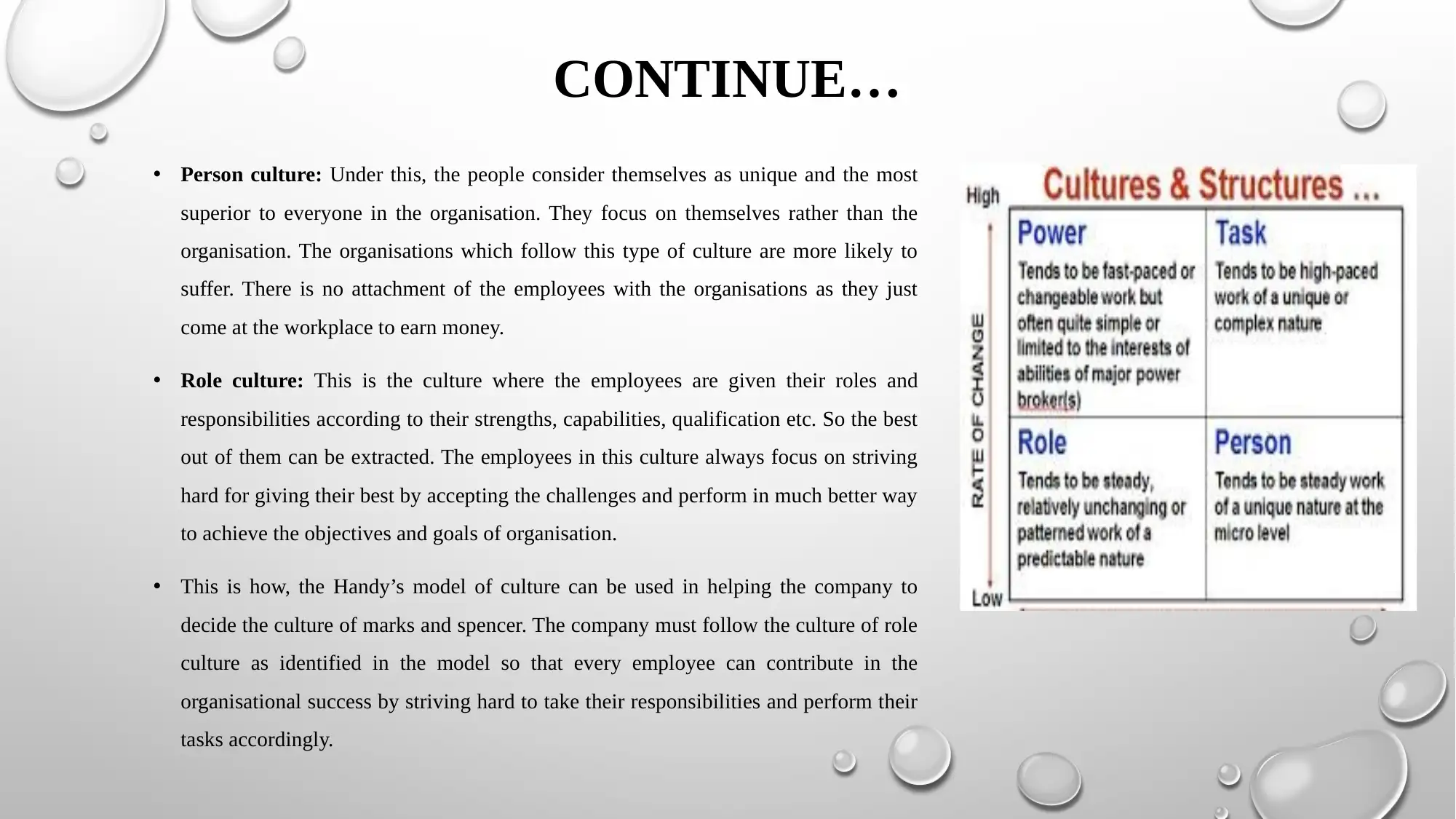
CONTINUE…
• Person culture: Under this, the people consider themselves as unique and the most
superior to everyone in the organisation. They focus on themselves rather than the
organisation. The organisations which follow this type of culture are more likely to
suffer. There is no attachment of the employees with the organisations as they just
come at the workplace to earn money.
• Role culture: This is the culture where the employees are given their roles and
responsibilities according to their strengths, capabilities, qualification etc. So the best
out of them can be extracted. The employees in this culture always focus on striving
hard for giving their best by accepting the challenges and perform in much better way
to achieve the objectives and goals of organisation.
• This is how, the Handy’s model of culture can be used in helping the company to
decide the culture of marks and spencer. The company must follow the culture of role
culture as identified in the model so that every employee can contribute in the
organisational success by striving hard to take their responsibilities and perform their
tasks accordingly.
• Person culture: Under this, the people consider themselves as unique and the most
superior to everyone in the organisation. They focus on themselves rather than the
organisation. The organisations which follow this type of culture are more likely to
suffer. There is no attachment of the employees with the organisations as they just
come at the workplace to earn money.
• Role culture: This is the culture where the employees are given their roles and
responsibilities according to their strengths, capabilities, qualification etc. So the best
out of them can be extracted. The employees in this culture always focus on striving
hard for giving their best by accepting the challenges and perform in much better way
to achieve the objectives and goals of organisation.
• This is how, the Handy’s model of culture can be used in helping the company to
decide the culture of marks and spencer. The company must follow the culture of role
culture as identified in the model so that every employee can contribute in the
organisational success by striving hard to take their responsibilities and perform their
tasks accordingly.
⊘ This is a preview!⊘
Do you want full access?
Subscribe today to unlock all pages.

Trusted by 1+ million students worldwide
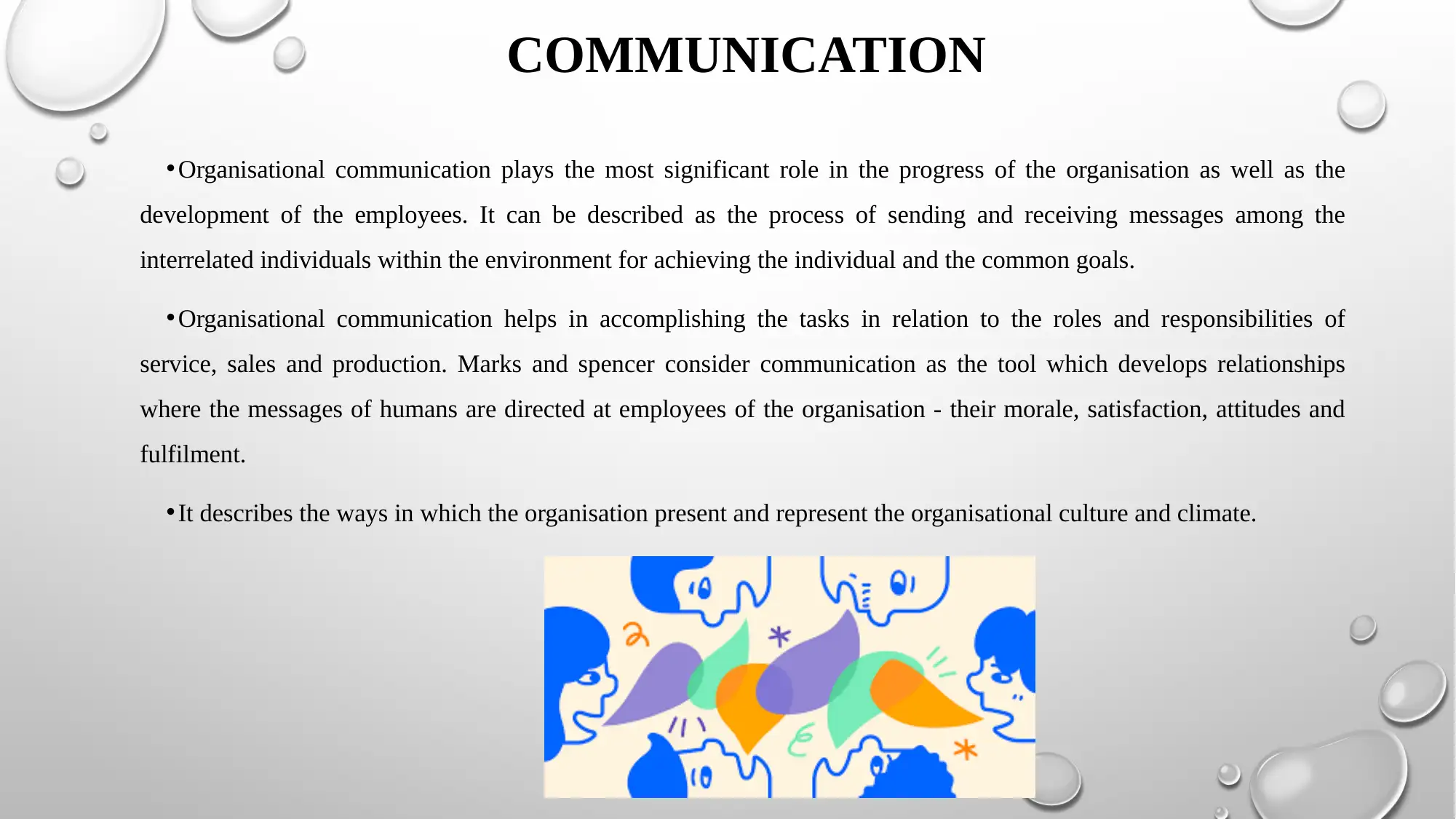
COMMUNICATION
• Organisational communication plays the most significant role in the progress of the organisation as well as the
development of the employees. It can be described as the process of sending and receiving messages among the
interrelated individuals within the environment for achieving the individual and the common goals.
• Organisational communication helps in accomplishing the tasks in relation to the roles and responsibilities of
service, sales and production. Marks and spencer consider communication as the tool which develops relationships
where the messages of humans are directed at employees of the organisation - their morale, satisfaction, attitudes and
fulfilment.
• It describes the ways in which the organisation present and represent the organisational culture and climate.
• Organisational communication plays the most significant role in the progress of the organisation as well as the
development of the employees. It can be described as the process of sending and receiving messages among the
interrelated individuals within the environment for achieving the individual and the common goals.
• Organisational communication helps in accomplishing the tasks in relation to the roles and responsibilities of
service, sales and production. Marks and spencer consider communication as the tool which develops relationships
where the messages of humans are directed at employees of the organisation - their morale, satisfaction, attitudes and
fulfilment.
• It describes the ways in which the organisation present and represent the organisational culture and climate.
Paraphrase This Document
Need a fresh take? Get an instant paraphrase of this document with our AI Paraphraser
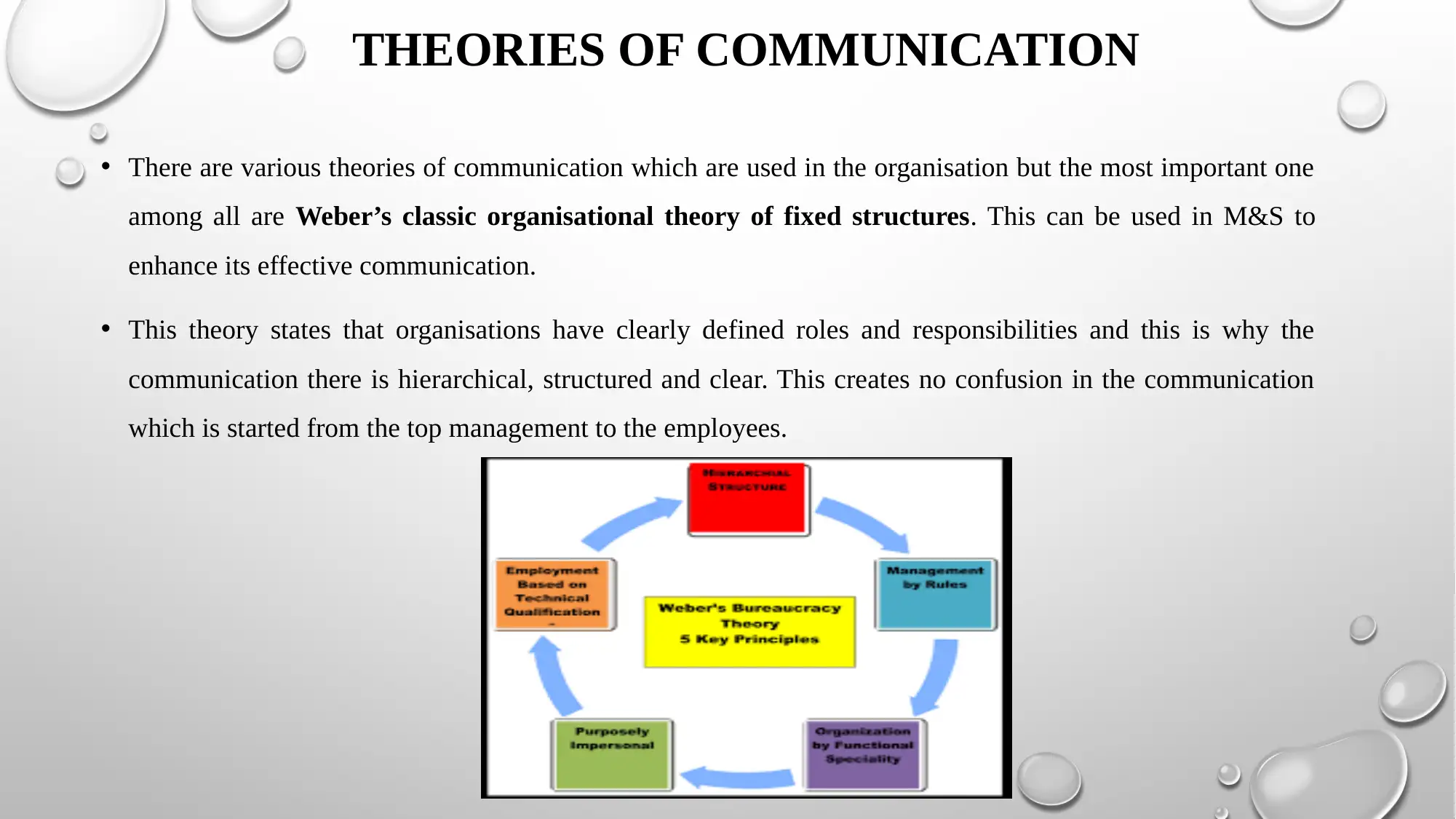
THEORIES OF COMMUNICATION
• There are various theories of communication which are used in the organisation but the most important one
among all are Weber’s classic organisational theory of fixed structures. This can be used in M&S to
enhance its effective communication.
• This theory states that organisations have clearly defined roles and responsibilities and this is why the
communication there is hierarchical, structured and clear. This creates no confusion in the communication
which is started from the top management to the employees.
• There are various theories of communication which are used in the organisation but the most important one
among all are Weber’s classic organisational theory of fixed structures. This can be used in M&S to
enhance its effective communication.
• This theory states that organisations have clearly defined roles and responsibilities and this is why the
communication there is hierarchical, structured and clear. This creates no confusion in the communication
which is started from the top management to the employees.
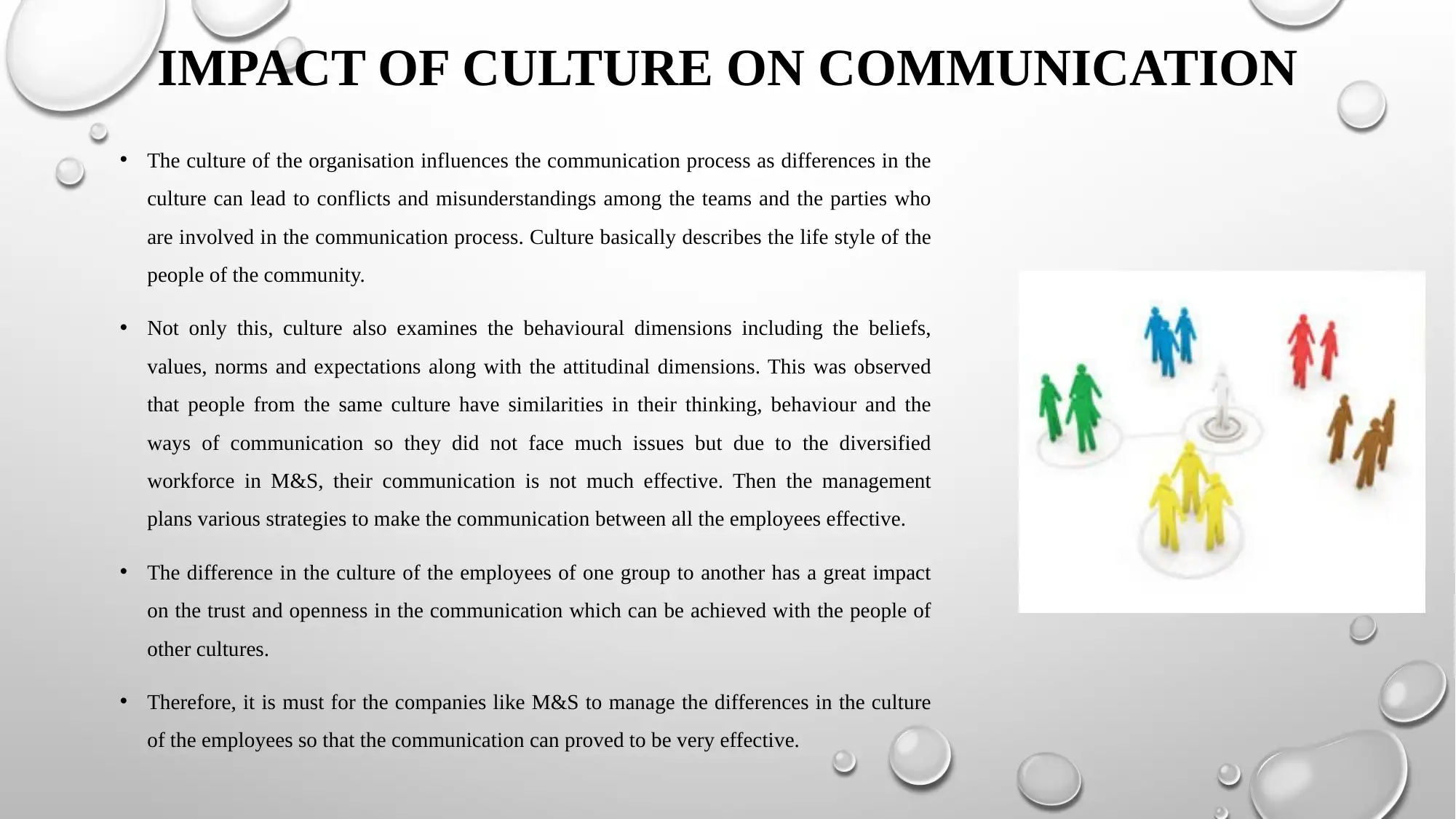
IMPACT OF CULTURE ON COMMUNICATION
• The culture of the organisation influences the communication process as differences in the
culture can lead to conflicts and misunderstandings among the teams and the parties who
are involved in the communication process. Culture basically describes the life style of the
people of the community.
• Not only this, culture also examines the behavioural dimensions including the beliefs,
values, norms and expectations along with the attitudinal dimensions. This was observed
that people from the same culture have similarities in their thinking, behaviour and the
ways of communication so they did not face much issues but due to the diversified
workforce in M&S, their communication is not much effective. Then the management
plans various strategies to make the communication between all the employees effective.
• The difference in the culture of the employees of one group to another has a great impact
on the trust and openness in the communication which can be achieved with the people of
other cultures.
• Therefore, it is must for the companies like M&S to manage the differences in the culture
of the employees so that the communication can proved to be very effective.
• The culture of the organisation influences the communication process as differences in the
culture can lead to conflicts and misunderstandings among the teams and the parties who
are involved in the communication process. Culture basically describes the life style of the
people of the community.
• Not only this, culture also examines the behavioural dimensions including the beliefs,
values, norms and expectations along with the attitudinal dimensions. This was observed
that people from the same culture have similarities in their thinking, behaviour and the
ways of communication so they did not face much issues but due to the diversified
workforce in M&S, their communication is not much effective. Then the management
plans various strategies to make the communication between all the employees effective.
• The difference in the culture of the employees of one group to another has a great impact
on the trust and openness in the communication which can be achieved with the people of
other cultures.
• Therefore, it is must for the companies like M&S to manage the differences in the culture
of the employees so that the communication can proved to be very effective.
⊘ This is a preview!⊘
Do you want full access?
Subscribe today to unlock all pages.

Trusted by 1+ million students worldwide
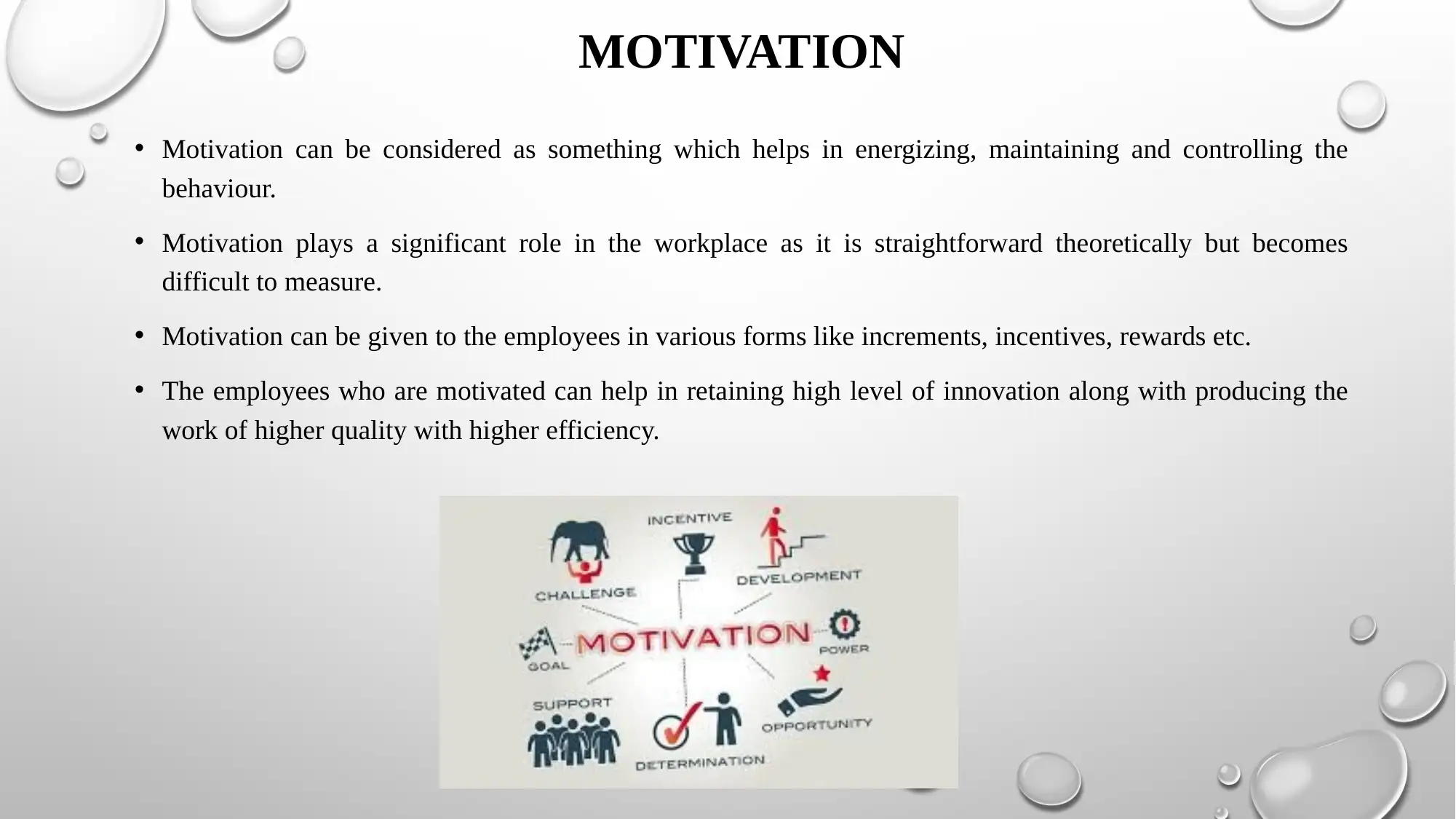
MOTIVATION
• Motivation can be considered as something which helps in energizing, maintaining and controlling the
behaviour.
• Motivation plays a significant role in the workplace as it is straightforward theoretically but becomes
difficult to measure.
• Motivation can be given to the employees in various forms like increments, incentives, rewards etc.
• The employees who are motivated can help in retaining high level of innovation along with producing the
work of higher quality with higher efficiency.
• Motivation can be considered as something which helps in energizing, maintaining and controlling the
behaviour.
• Motivation plays a significant role in the workplace as it is straightforward theoretically but becomes
difficult to measure.
• Motivation can be given to the employees in various forms like increments, incentives, rewards etc.
• The employees who are motivated can help in retaining high level of innovation along with producing the
work of higher quality with higher efficiency.
Paraphrase This Document
Need a fresh take? Get an instant paraphrase of this document with our AI Paraphraser
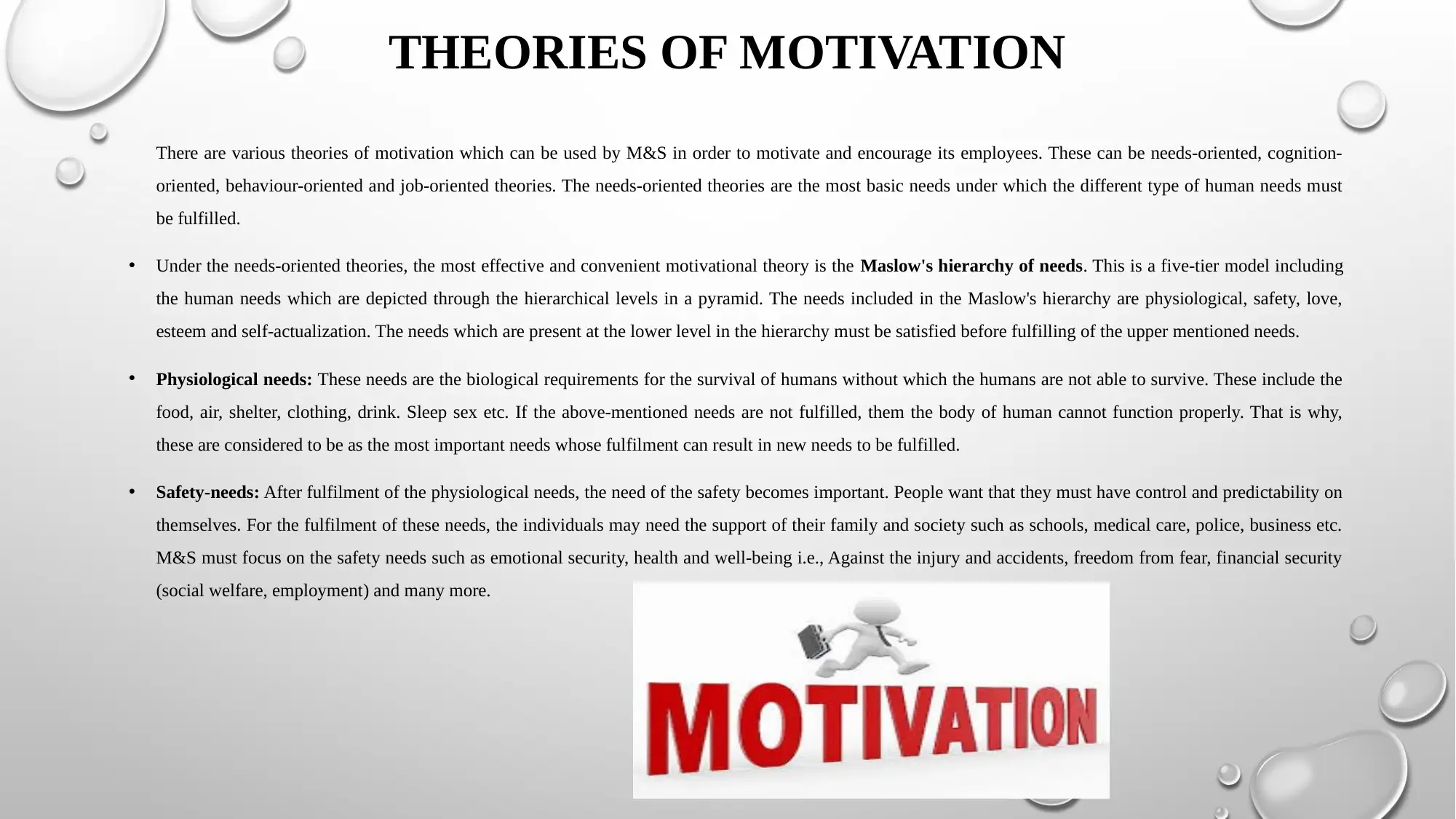
THEORIES OF MOTIVATION
There are various theories of motivation which can be used by M&S in order to motivate and encourage its employees. These can be needs-oriented, cognition-
oriented, behaviour-oriented and job-oriented theories. The needs-oriented theories are the most basic needs under which the different type of human needs must
be fulfilled.
• Under the needs-oriented theories, the most effective and convenient motivational theory is the Maslow's hierarchy of needs. This is a five-tier model including
the human needs which are depicted through the hierarchical levels in a pyramid. The needs included in the Maslow's hierarchy are physiological, safety, love,
esteem and self-actualization. The needs which are present at the lower level in the hierarchy must be satisfied before fulfilling of the upper mentioned needs.
• Physiological needs: These needs are the biological requirements for the survival of humans without which the humans are not able to survive. These include the
food, air, shelter, clothing, drink. Sleep sex etc. If the above-mentioned needs are not fulfilled, them the body of human cannot function properly. That is why,
these are considered to be as the most important needs whose fulfilment can result in new needs to be fulfilled.
• Safety-needs: After fulfilment of the physiological needs, the need of the safety becomes important. People want that they must have control and predictability on
themselves. For the fulfilment of these needs, the individuals may need the support of their family and society such as schools, medical care, police, business etc.
M&S must focus on the safety needs such as emotional security, health and well-being i.e., Against the injury and accidents, freedom from fear, financial security
(social welfare, employment) and many more.
There are various theories of motivation which can be used by M&S in order to motivate and encourage its employees. These can be needs-oriented, cognition-
oriented, behaviour-oriented and job-oriented theories. The needs-oriented theories are the most basic needs under which the different type of human needs must
be fulfilled.
• Under the needs-oriented theories, the most effective and convenient motivational theory is the Maslow's hierarchy of needs. This is a five-tier model including
the human needs which are depicted through the hierarchical levels in a pyramid. The needs included in the Maslow's hierarchy are physiological, safety, love,
esteem and self-actualization. The needs which are present at the lower level in the hierarchy must be satisfied before fulfilling of the upper mentioned needs.
• Physiological needs: These needs are the biological requirements for the survival of humans without which the humans are not able to survive. These include the
food, air, shelter, clothing, drink. Sleep sex etc. If the above-mentioned needs are not fulfilled, them the body of human cannot function properly. That is why,
these are considered to be as the most important needs whose fulfilment can result in new needs to be fulfilled.
• Safety-needs: After fulfilment of the physiological needs, the need of the safety becomes important. People want that they must have control and predictability on
themselves. For the fulfilment of these needs, the individuals may need the support of their family and society such as schools, medical care, police, business etc.
M&S must focus on the safety needs such as emotional security, health and well-being i.e., Against the injury and accidents, freedom from fear, financial security
(social welfare, employment) and many more.
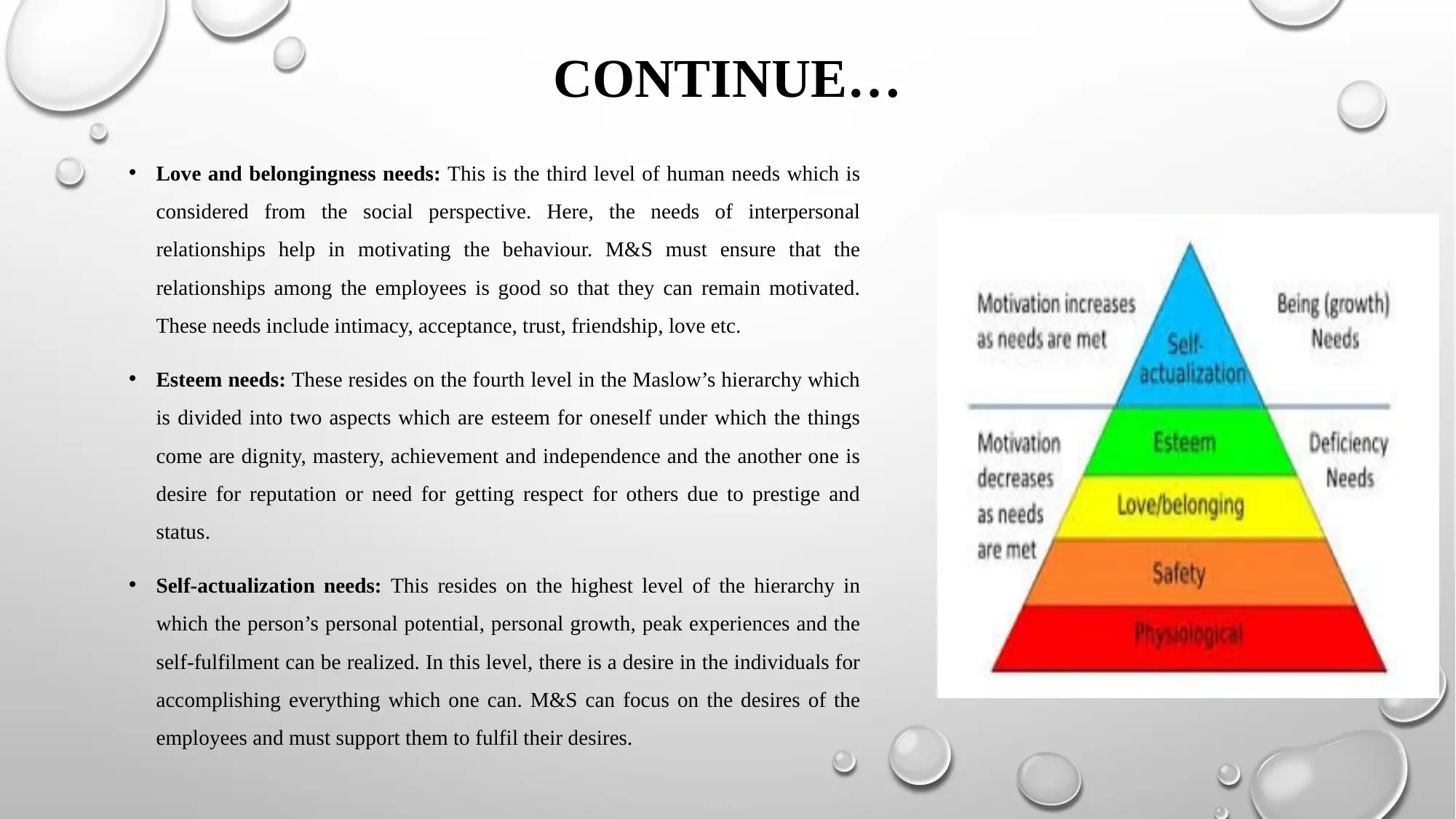
CONTINUE…
• Love and belongingness needs: This is the third level of human needs which is
considered from the social perspective. Here, the needs of interpersonal
relationships help in motivating the behaviour. M&S must ensure that the
relationships among the employees is good so that they can remain motivated.
These needs include intimacy, acceptance, trust, friendship, love etc.
• Esteem needs: These resides on the fourth level in the Maslow’s hierarchy which
is divided into two aspects which are esteem for oneself under which the things
come are dignity, mastery, achievement and independence and the another one is
desire for reputation or need for getting respect for others due to prestige and
status.
• Self-actualization needs: This resides on the highest level of the hierarchy in
which the person’s personal potential, personal growth, peak experiences and the
self-fulfilment can be realized. In this level, there is a desire in the individuals for
accomplishing everything which one can. M&S can focus on the desires of the
employees and must support them to fulfil their desires.
• Love and belongingness needs: This is the third level of human needs which is
considered from the social perspective. Here, the needs of interpersonal
relationships help in motivating the behaviour. M&S must ensure that the
relationships among the employees is good so that they can remain motivated.
These needs include intimacy, acceptance, trust, friendship, love etc.
• Esteem needs: These resides on the fourth level in the Maslow’s hierarchy which
is divided into two aspects which are esteem for oneself under which the things
come are dignity, mastery, achievement and independence and the another one is
desire for reputation or need for getting respect for others due to prestige and
status.
• Self-actualization needs: This resides on the highest level of the hierarchy in
which the person’s personal potential, personal growth, peak experiences and the
self-fulfilment can be realized. In this level, there is a desire in the individuals for
accomplishing everything which one can. M&S can focus on the desires of the
employees and must support them to fulfil their desires.
⊘ This is a preview!⊘
Do you want full access?
Subscribe today to unlock all pages.

Trusted by 1+ million students worldwide
1 out of 17
Related Documents
Your All-in-One AI-Powered Toolkit for Academic Success.
+13062052269
info@desklib.com
Available 24*7 on WhatsApp / Email
![[object Object]](/_next/static/media/star-bottom.7253800d.svg)
Unlock your academic potential
Copyright © 2020–2025 A2Z Services. All Rights Reserved. Developed and managed by ZUCOL.





